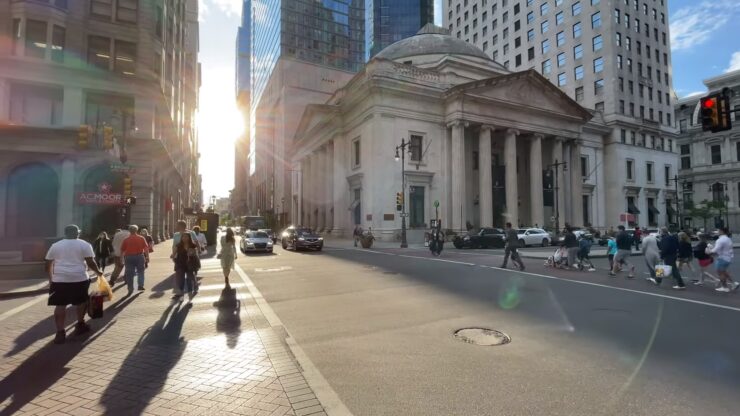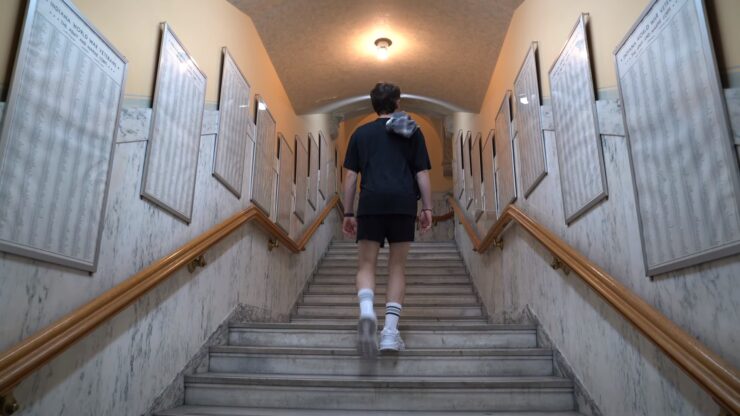In a nation as vast and diverse as the United States, the issue of violence varies significantly from one city to another. While some cities are havens of peace and security, others struggle with high rates of violent crime.
This article aims to shed light on the 15 most violent cities in the U.S. as of 2024, drawing on data from reputable sources and offering expert analysis on the underlying factors contributing to these alarming statistics.
Why This Topic Matters
Violence in cities is not just a local issue; it’s a national concern that affects us all, either directly or indirectly. High crime rates can deter investment, lower property values, and impede social mobility. Understanding which cities are most affected by violence is the first step in addressing the root causes and finding long-term solutions.
Sources and Data
For this analysis, we rely on two primary sources: U.S. News & World Report and World Population Review . These platform offer comprehensive data sets that include various types of violent crimes such as homicide, assault, and robbery.
Methodology
Data Analysis
After data collection, the next step is analysis. We’ve employed various statistical methods to interpret the data, including per capita rates of violent crimes. This allows us to make fair comparisons between cities of different sizes, providing a more nuanced understanding of the issue at hand.
The Role of Population Density
Density and Crime Rates
One of the most intriguing aspects of violent crime in cities is its correlation with population density. Cities with higher population densities tend to have higher rates of violent crime. This is not to say that density causes crime, but rather that a higher concentration of people can create environments where crime is more likely to occur.
Case Studies
- New York City: Despite its high population density, NYC has relatively low violent crime rates. This can be attributed to effective policing and community engagement.
- St. Louis: On the other hand, St. Louis has a lower population density but a higher rate of violent crime, indicating that density is not the only factor at play.
Cities in Focus
St. Louis, Missouri
St. Louis tops the list with alarming rates of violent crime, including homicide and armed robbery. According to data from World Population Review, the city has a violent crime rate of 1,927 per 100,000 residents. This is significantly higher than the national average and warrants immediate attention.
St. Louis struggles with a range of issues that contribute to its high crime rate, including poverty, unemployment, and a lack of educational opportunities. The city’s racial tension and history of segregation also play a role in the perpetuation of crime, making it a complex issue that requires a multi-faceted approach.
Baltimore, Maryland
Baltimore is another city that consistently ranks high for violent crime. With a rate of 1,833 violent crimes per 100,000 residents, it’s a city that faces significant challenges. Homicides, in particular, are a major concern, often linked to gang violence and drug trafficking.
Economic disparity is a significant driver of crime in Baltimore. The city has pockets of extreme poverty juxtaposed with affluent areas, creating social tension. Additionally, the opioid crisis has hit Baltimore hard, contributing to its high violent crime rate.
Detroit, Michigan
Detroit has a violent crime rate of 1,759 per 100,000 residents, making it one of the most dangerous cities in the U.S. The city struggles with high rates of robbery and assault, impacting the quality of life for its residents.
Detroit’s high crime rate can be attributed to its struggling economy. Once a booming industrial city, Detroit has faced economic decline, leading to high unemployment rates. This economic hardship is a significant factor contributing to the city’s high levels of violent crime.
Memphis, Tennessee
Memphis has a violent crime rate of 1,901 per 100,000 residents, making it one of the most dangerous cities in the U.S. The city has a particularly high rate of aggravated assault, which is a significant concern for local authorities.
Memphis struggles with a high poverty rate, which is a key driver of its violent crime. Additionally, the city has been grappling with gang violence, which is often linked to drug trafficking. These interconnected issues make tackling crime in Memphis a complex challenge that requires a multi-pronged approach.
Oakland, California
Oakland has a violent crime rate of 1,442 per 100,000 residents. While lower than some other cities on this list, it’s still a significant issue. The city has a high rate of robbery and has been dealing with an increase in homicides in recent years.
Oakland’s crime rate is influenced by a variety of factors, including economic inequality and a lack of affordable housing. The city also faces challenges related to police-community relations, which can impact the effectiveness of law enforcement efforts to combat crime.
Kansas City, Missouri
Kansas City has a violent crime rate of 1,654 per 100,000 residents. Homicides and robberies are particularly prevalent, making it a city where residents often feel unsafe.
Kansas City’s high crime rate can be attributed to a range of issues, including poverty and a lack of educational opportunities. The city also has areas with high concentrations of abandoned properties, which can become hotspots for criminal activity.
New Orleans, Louisiana
New Orleans has a violent crime rate of 1,121 per 100,000 residents. While this is lower than some other cities on this list, it’s still a significant concern. The city is particularly known for its high rates of property crime, which often go hand-in-hand with violent offenses.
New Orleans faces unique challenges, including the aftermath of natural disasters like Hurricane Katrina, which have had long-term impacts on poverty and infrastructure. Additionally, the city’s vibrant nightlife can sometimes be a magnet for criminal activity, adding another layer of complexity to the issue.
Milwaukee, Wisconsin
Milwaukee has a violent crime rate of 1,597 per 100,000 residents. The city has been grappling with an increase in homicides and aggravated assaults, making it a focus of concern for both local authorities and residents.
Milwaukee’s high crime rate can be attributed to a range of factors, including economic disparity and racial tension. The city has a significant wealth gap, and areas with lower socioeconomic status are often hotspots for violent crime. Additionally, Milwaukee has struggled with issues related to policing and community relations.
Albuquerque, New Mexico
Albuquerque has a violent crime rate of 1,352 per 100,000 residents. The city has seen a rise in crimes like robbery and aggravated assault, making it one of the more dangerous cities in the southwestern U.S.
Albuquerque faces challenges related to drug abuse, particularly methamphetamine, which has been linked to an increase in violent crime. The city also has issues related to poverty and a lack of mental health services, which contribute to its high crime rate.
Cleveland, Ohio
Cleveland has a violent crime rate of 1,334 per 100,000 residents. The city has been dealing with a high rate of aggravated assaults and robberies, making it a challenging environment for both residents and law enforcement.
Cleveland’s high crime rate is closely tied to its economic struggles. The city has a high poverty rate and faces challenges related to unemployment and underemployment. Additionally, Cleveland has areas with high concentrations of abandoned properties, which often become hotspots for criminal activity.
Indianapolis, Indiana
Indianapolis has a violent crime rate of 1,272 per 100,000 residents. The city has seen an uptick in homicides and robberies, which is a significant concern for local authorities.
Indianapolis faces a range of challenges that contribute to its high crime rate, including drug abuse and a lack of educational opportunities. The city also struggles with issues related to community policing, which impacts the effectiveness of law enforcement efforts to combat crime.
Stockton, California
Stockton has a violent crime rate of 1,415 per 100,000 residents. The city is particularly known for its high rates of property crime, which often coincide with violent offenses.
Stockton’s high crime rate can be attributed to a variety of factors, including economic hardship and a lack of social services. The city has a significant wealth gap, and areas with lower socioeconomic status are often more susceptible to violent crime.
Atlanta, Georgia
Atlanta has a violent crime rate of 1,227 per 100,000 residents. The city has been grappling with an increase in homicides and aggravated assaults, making it a focus of concern for both local authorities and residents.
Atlanta’s high crime rate can be attributed to a range of factors, including economic disparity and racial tension. The city has a significant wealth gap, and areas with lower socioeconomic status are often hotspots for violent crime. Additionally, Atlanta has struggled with issues related to policing and community relations.
Philadelphia, Pennsylvania
Philadelphia has a violent crime rate of 1,100 per 100,000 residents. While this is lower than some other cities on this list, it’s still a significant issue. The city has a high rate of robbery and has been dealing with an increase in homicides in recent years.
Philadelphia’s crime rate is influenced by a variety of factors, including economic inequality and a lack of affordable housing. The city also faces challenges related to police-community relations, which can impact the effectiveness of law enforcement efforts to combat crime.
Chicago, Illinois
Chicago has a violent crime rate of 1,006 per 100,000 residents. The city struggles with high rates of robbery and assault, impacting the quality of life for its residents.
Chicago’s high crime rate can be attributed to its struggling economy. Once a booming industrial city, Chicago has faced economic decline, leading to high unemployment rates. This economic hardship is a significant factor contributing to the city’s high levels of violent crime.
Economic Factors
Economic disparity is another significant factor contributing to violent crime rates in cities. A wide gap between the rich and the poor often leads to social tension, which can manifest as crime. Cities with high levels of poverty and unemployment are more susceptible to violence as individuals may resort to criminal activities as a means of survival.
High unemployment rates are often directly correlated with high crime rates. When people are jobless, they are more likely to engage in illegal activities to make ends meet. For instance, cities like Detroit and Baltimore have high unemployment rates, and they also feature prominently on the list of most violent cities.
Education and Crime
Education is a powerful tool for reducing crime. Cities with better educational systems often have lower crime rates. A well-educated populace is more likely to engage in productive activities and less likely to resort to crime. In contrast, cities with failing educational systems often see a cycle of crime perpetuated across generations.
The “school-to-prison pipeline” is a disturbing trend where children in underfunded schools are more likely to end up in the criminal justice system. This is particularly prevalent in cities with high rates of violent crime. For example, Chicago has been grappling with this issue, as a significant number of young people transition from poorly performing schools to criminal activities.
Policy Recommendations
One effective approach to reducing crime is community policing, where law enforcement officers build positive relationships with community members. This fosters a sense of trust and cooperation, making it easier to prevent crimes and solve cases. Cities like Boston have seen a decline in violent crime rates after implementing community policing strategies.
Policy changes can also play a crucial role in reducing violent crime. Stricter gun control laws, for instance, can make it more challenging for criminals to acquire firearms. Additionally, reforming the criminal justice system to focus on rehabilitation rather than punishment can help reduce recidivism rates.
Drug Abuse and Crime
The opioid crisis has been a significant contributor to the rise in violent crimes in several U.S. cities. Opioids often serve as a gateway to criminal behavior, as individuals addicted to these substances may resort to theft, robbery, or even violent acts to sustain their addiction. Cities like Baltimore and Philadelphia have been particularly hard-hit by the opioid epidemic, and this has had a noticeable impact on their crime rates.
Drug trafficking is another aspect that fuels violent crime. Cities close to international borders or major highways often become hubs for drug trade, leading to an increase in violence. For example, cities like El Paso have struggled with drug-related violence due to their proximity to the Mexican border.
Racial Disparities
Racial disparities in violent crime rates are often a reflection of deeper systemic issues, including economic inequality and social injustice. Cities with a history of racial tension and segregation often have higher rates of violent crime among minority communities. This is not a reflection of any racial group’s propensity for crime but rather an outcome of systemic discrimination.
Racial profiling by law enforcement can exacerbate crime rates in minority communities. Unfair policing practices can alienate communities, making them less likely to cooperate with law enforcement, thereby making it more challenging to prevent and solve crimes. Cities like Minneapolis have been grappling with this complex issue, especially in the wake of high-profile cases like the murder of George Floyd.
Impact of COVID-19
The COVID-19 pandemic has had a multifaceted impact on violent crime rates. The stress and economic hardship induced by the pandemic have led to an uptick in domestic violence and other forms of crime. Cities like Los Angeles and New York saw a spike in violent crimes during the lockdown periods.
Interestingly, the shift to remote work has also had an impact on crime rates. With fewer people commuting and more people at home, some types of crime like burglary have seen a decrease, while others, such as domestic violence, have increased. This shift presents a new set of challenges for policymakers and law enforcement agencies.
FAQ
1. Are these rankings for the most violent cities consistent from year to year?
No, rankings for the most violent cities can change from year to year. Factors such as changes in law enforcement strategies, economic conditions, and social policies can influence crime rates. It’s essential to regularly update these rankings to understand current trends accurately.
2. How do cities with high crime rates compare to safer cities in terms of population size?
Cities with high crime rates can vary significantly in population size. Some cities on the list are major metropolitan areas with millions of residents, while others are smaller cities with populations in the hundreds of thousands. When analyzing crime rates, it’s crucial to consider per capita figures to make fair comparisons.
3. Do these rankings take into account all types of violent crime?
Yes, these rankings typically consider various types of violent crime, including homicide, assault, robbery, and sexual assault. Examining a wide range of violent crimes provides a more comprehensive view of a city’s safety and crime challenges.
4. What are the long-term effects of being on this list for a city?
Being on the list of the most violent cities can have long-term consequences for a city’s reputation and economic prospects. High crime rates can deter investment, lead to population loss, and strain local resources. Addressing crime is not only a matter of safety but also vital for a city’s overall well-being.
5. What role does community engagement play in reducing crime in these cities?
Community engagement is a crucial factor in reducing crime. Building trust between law enforcement and residents, fostering neighborhood watch programs, and promoting community initiatives can lead to better cooperation and crime prevention. Many cities have seen success in reducing crime through such efforts.
Final Words
As we conclude this analysis, we encourage readers to take these insights beyond the page. By working together, residents, policymakers, and law enforcement agencies can make progress in reducing violent crime and building a brighter future for our cities.























